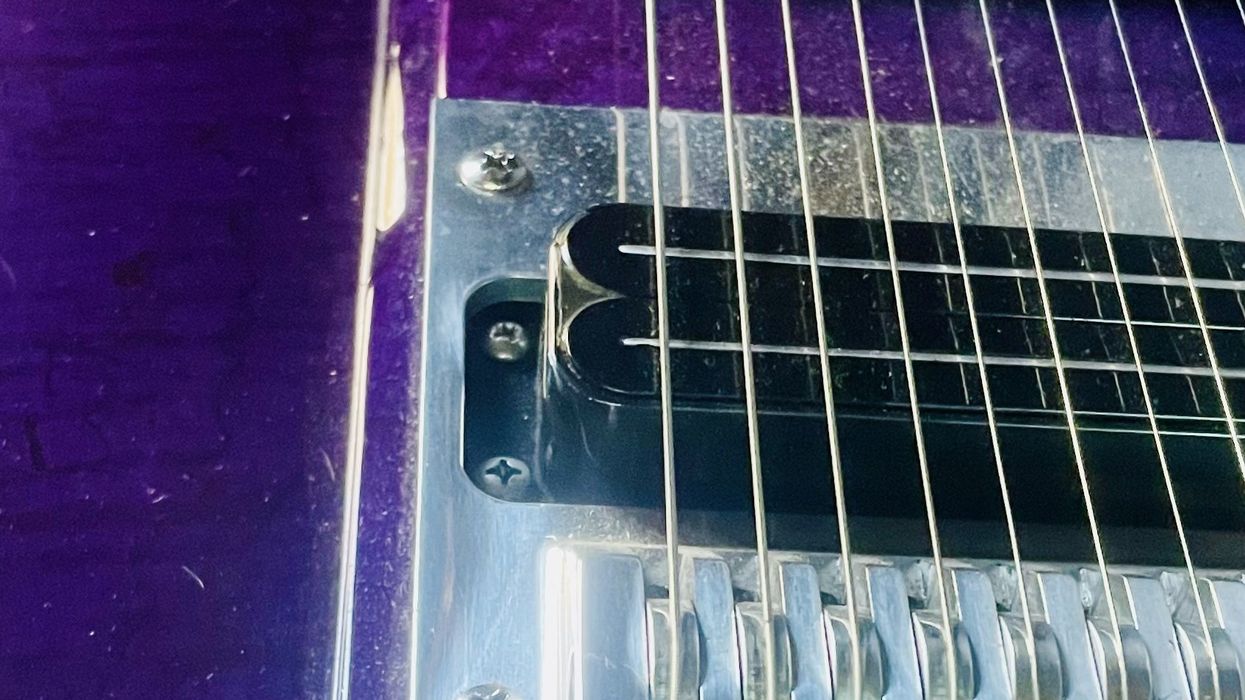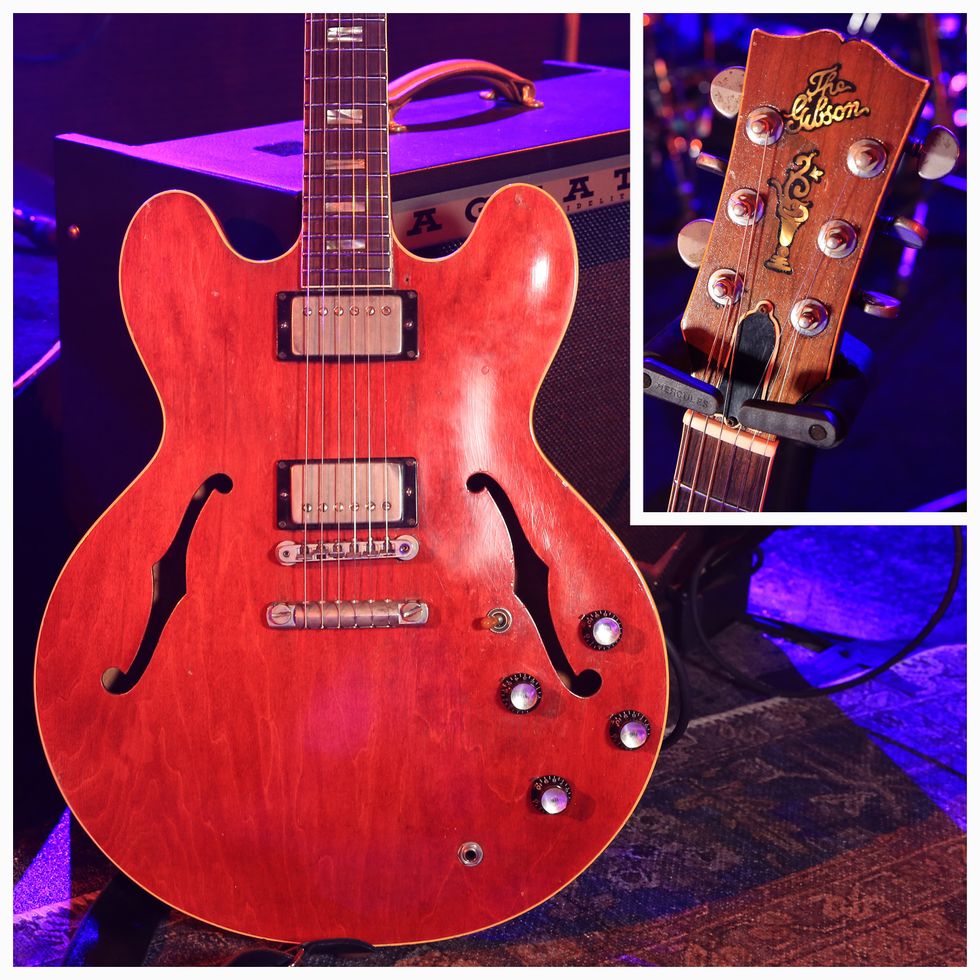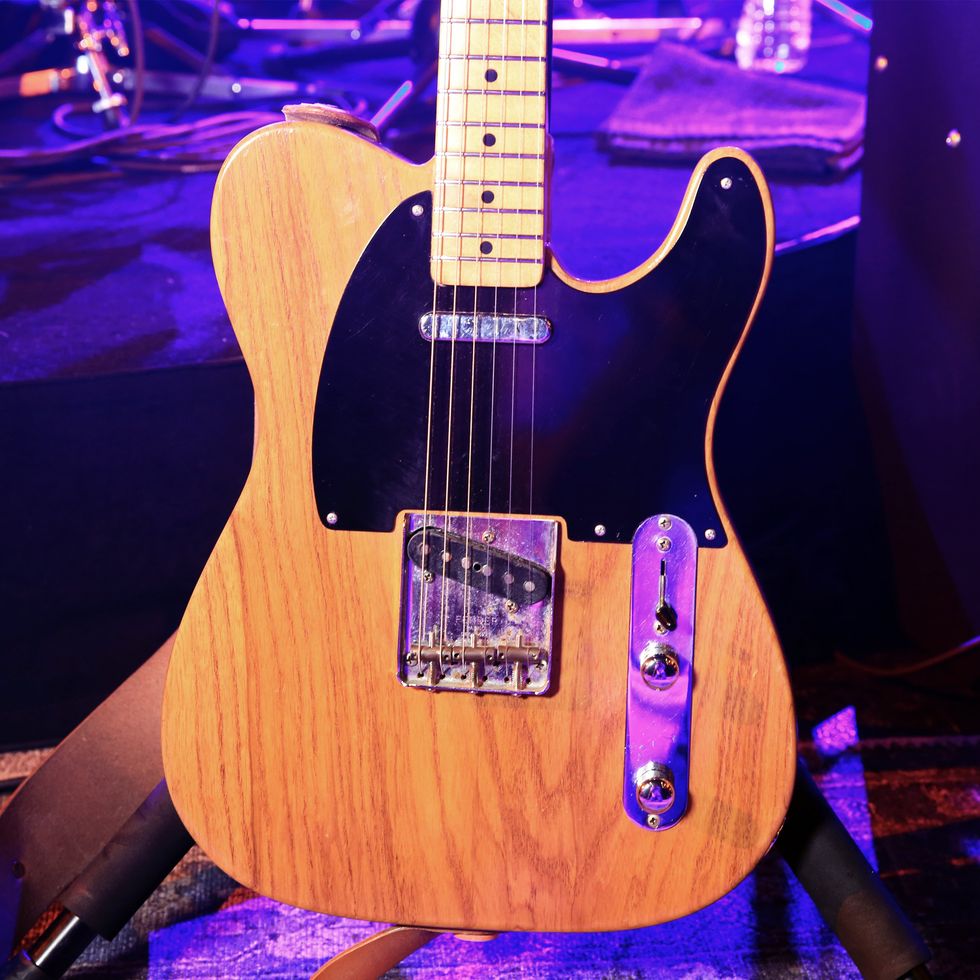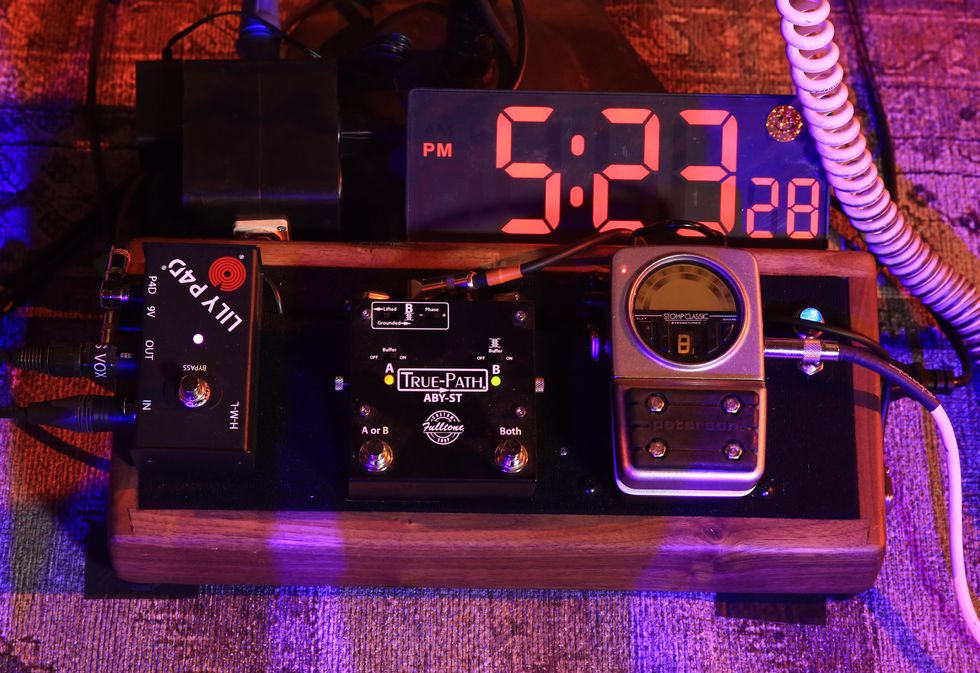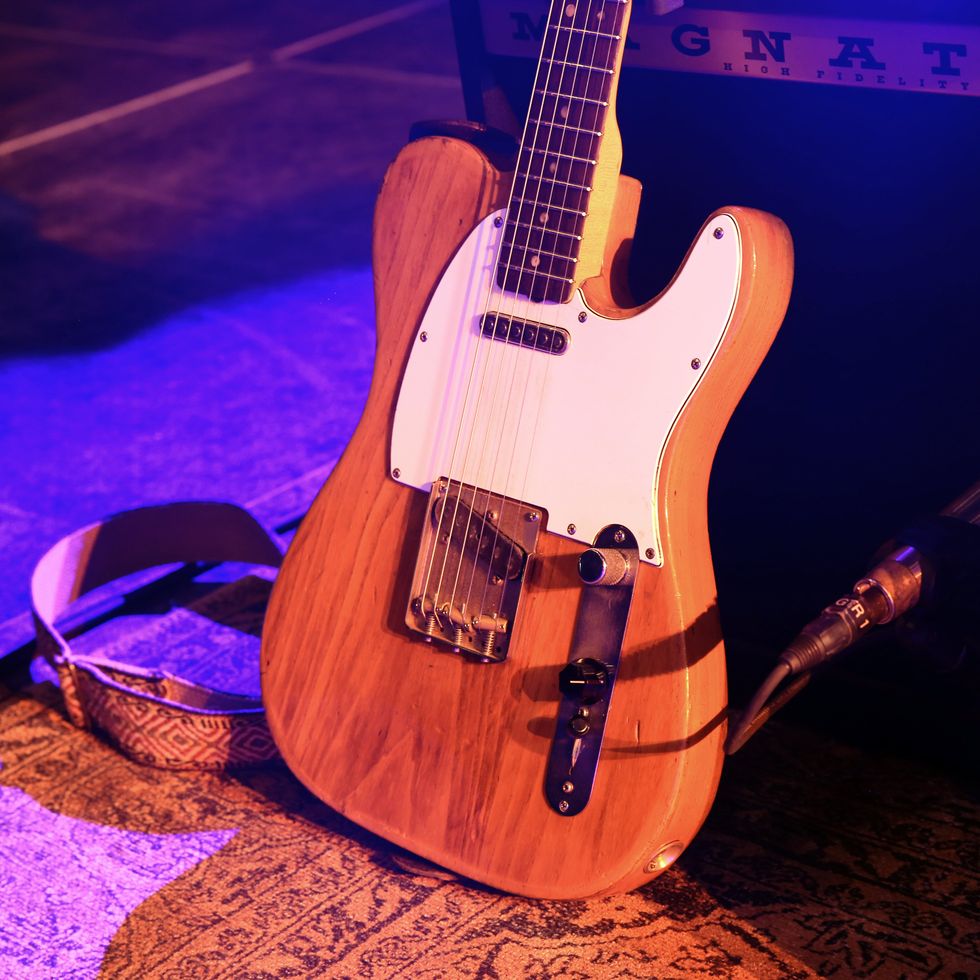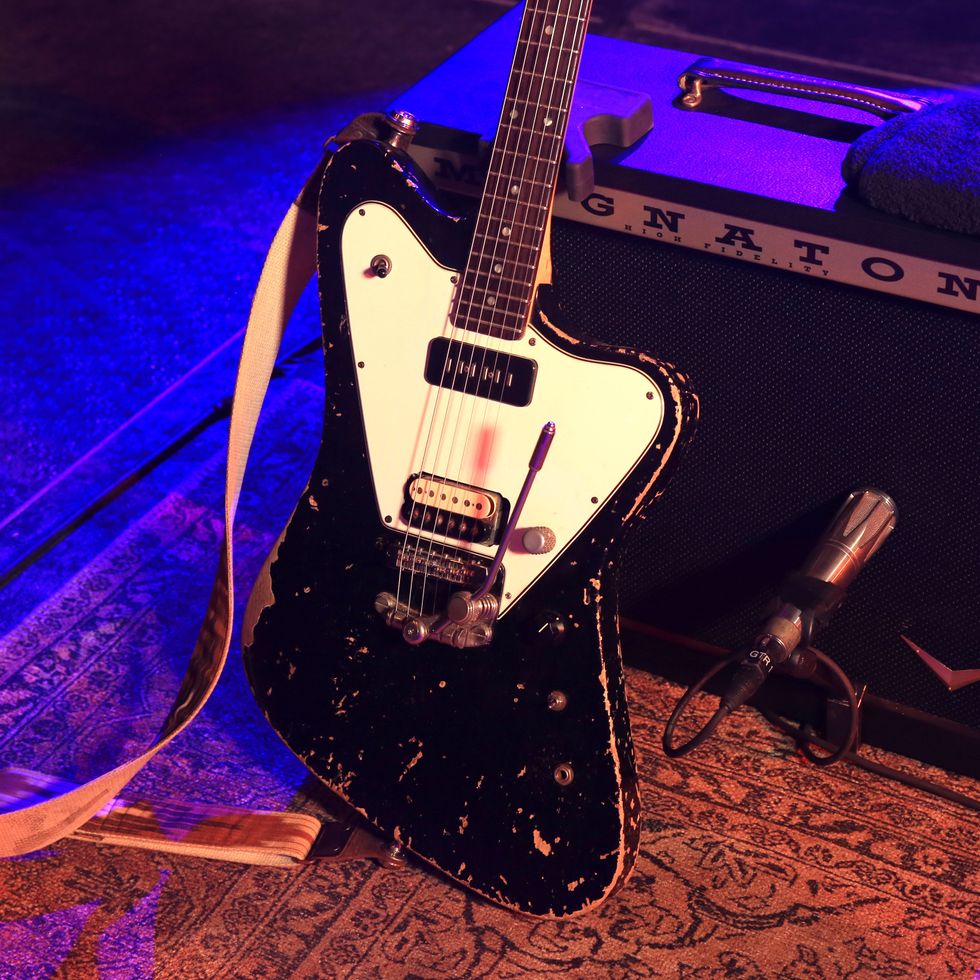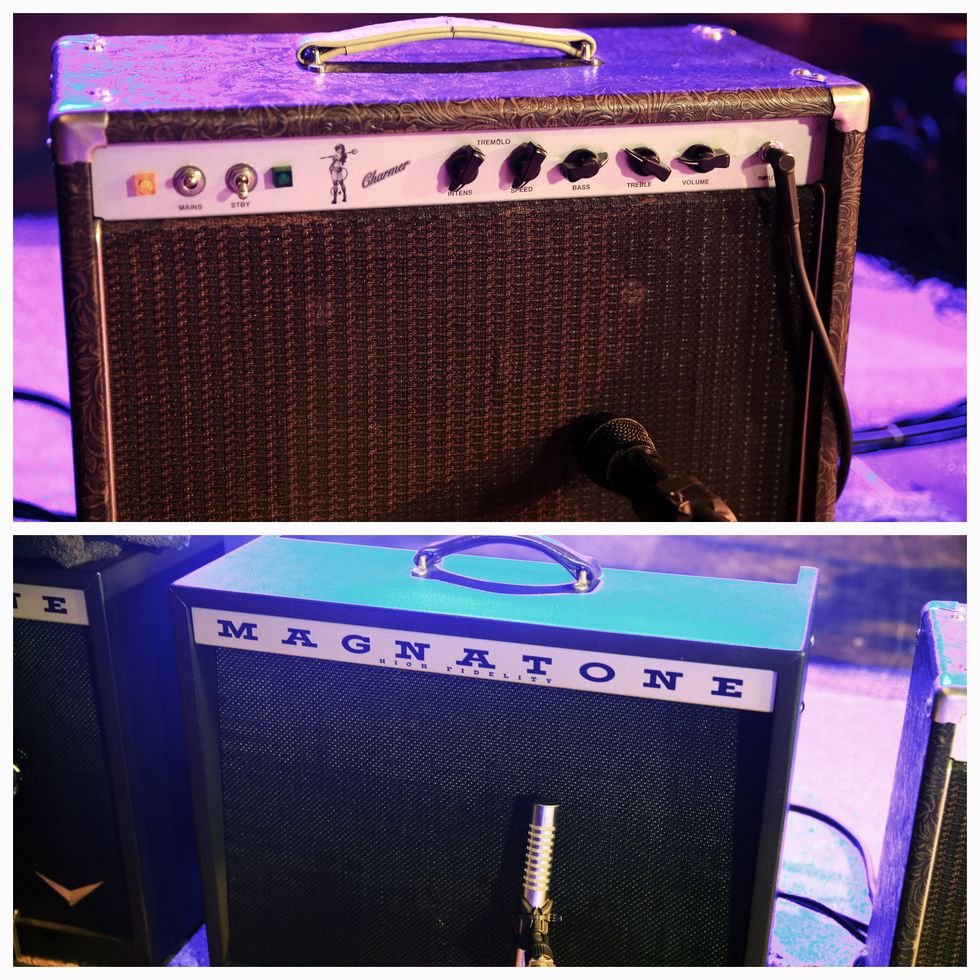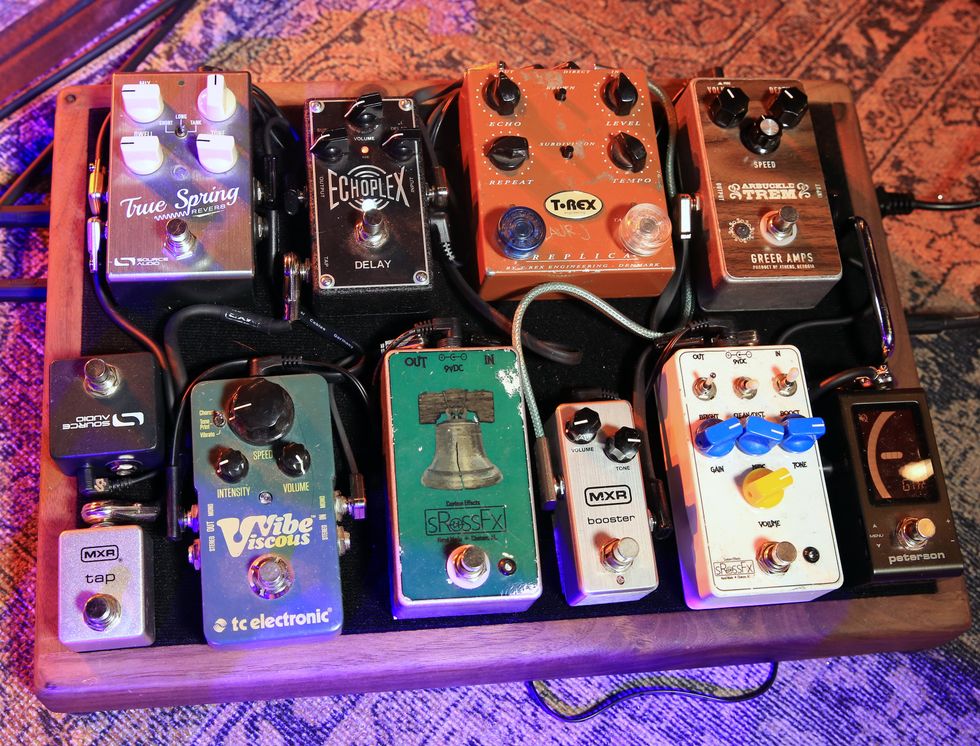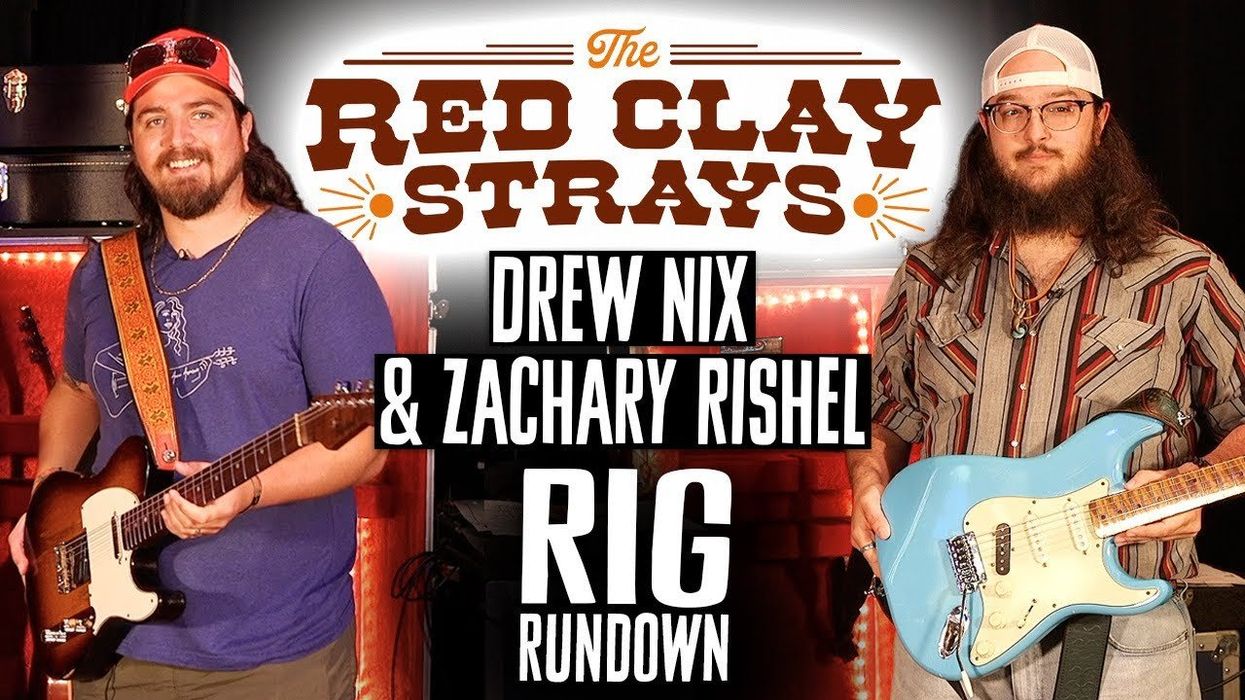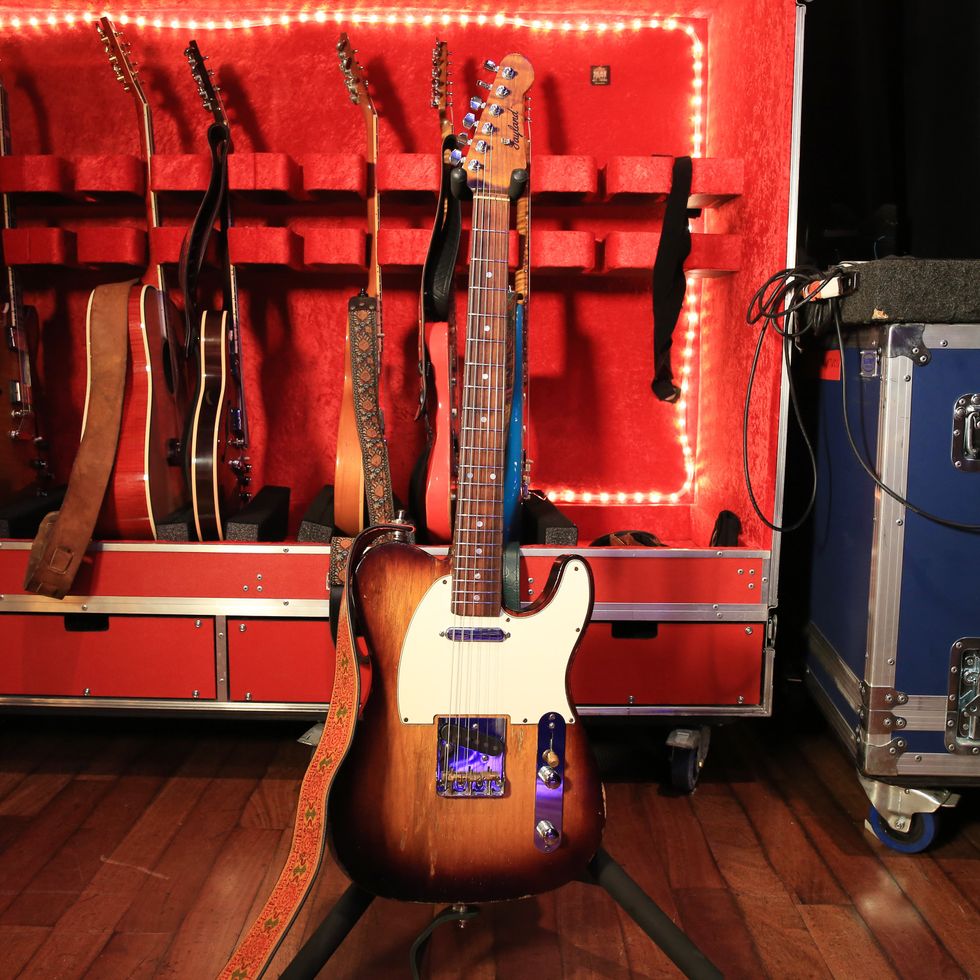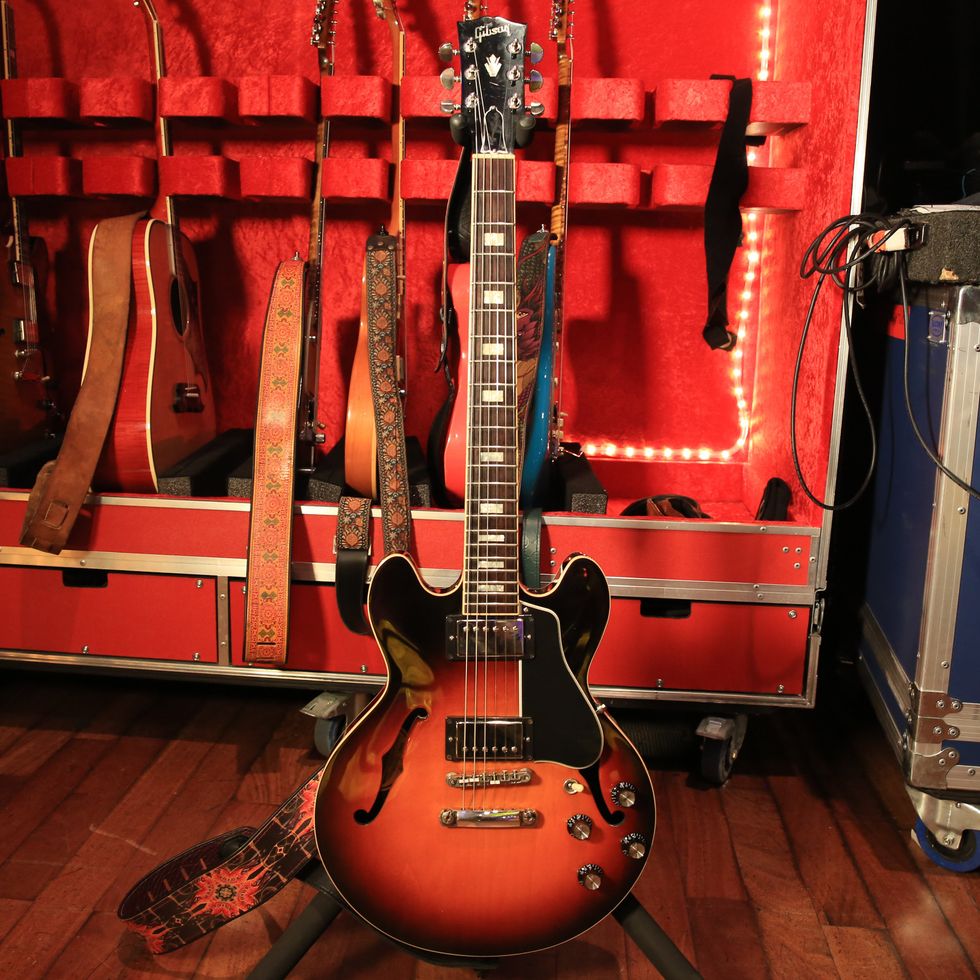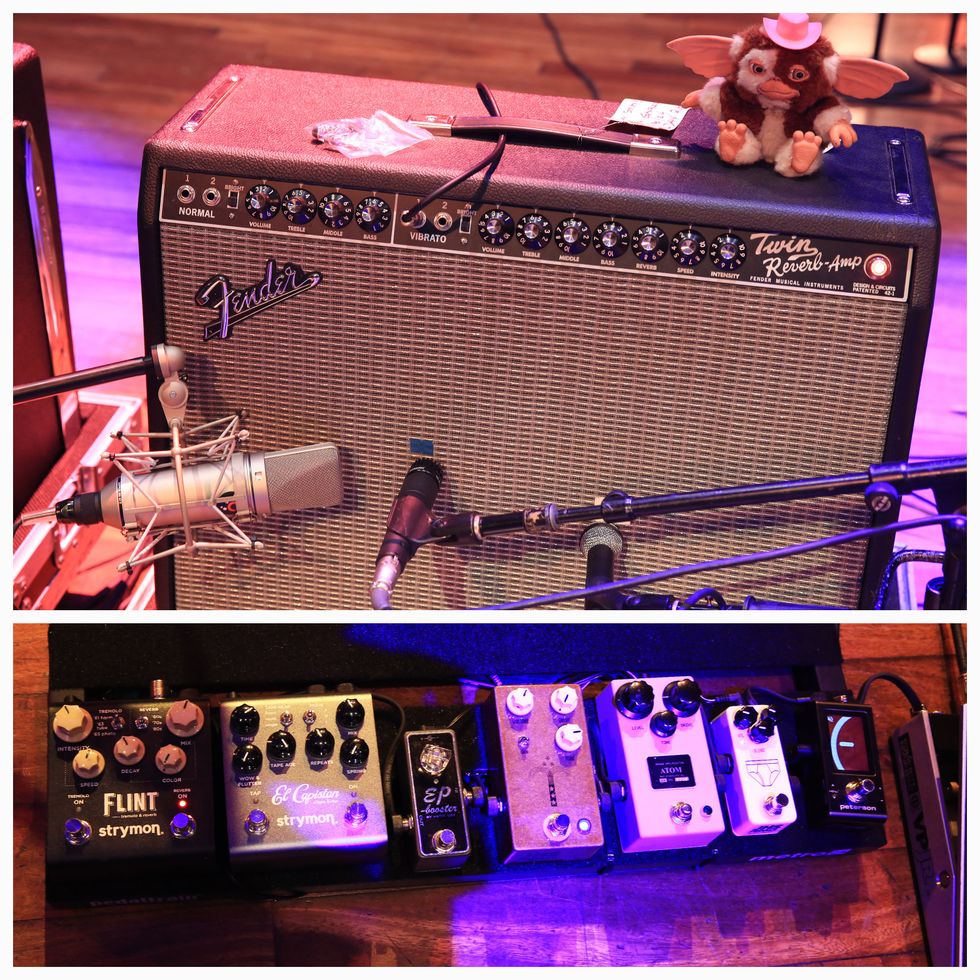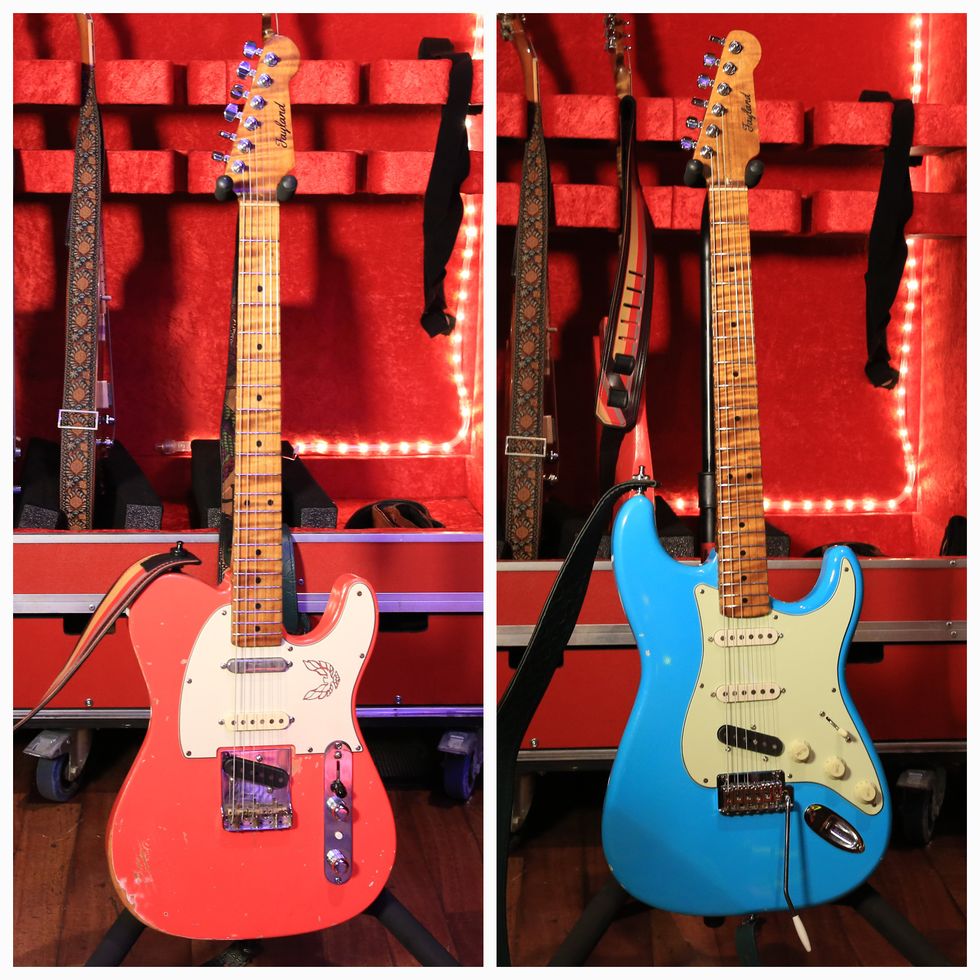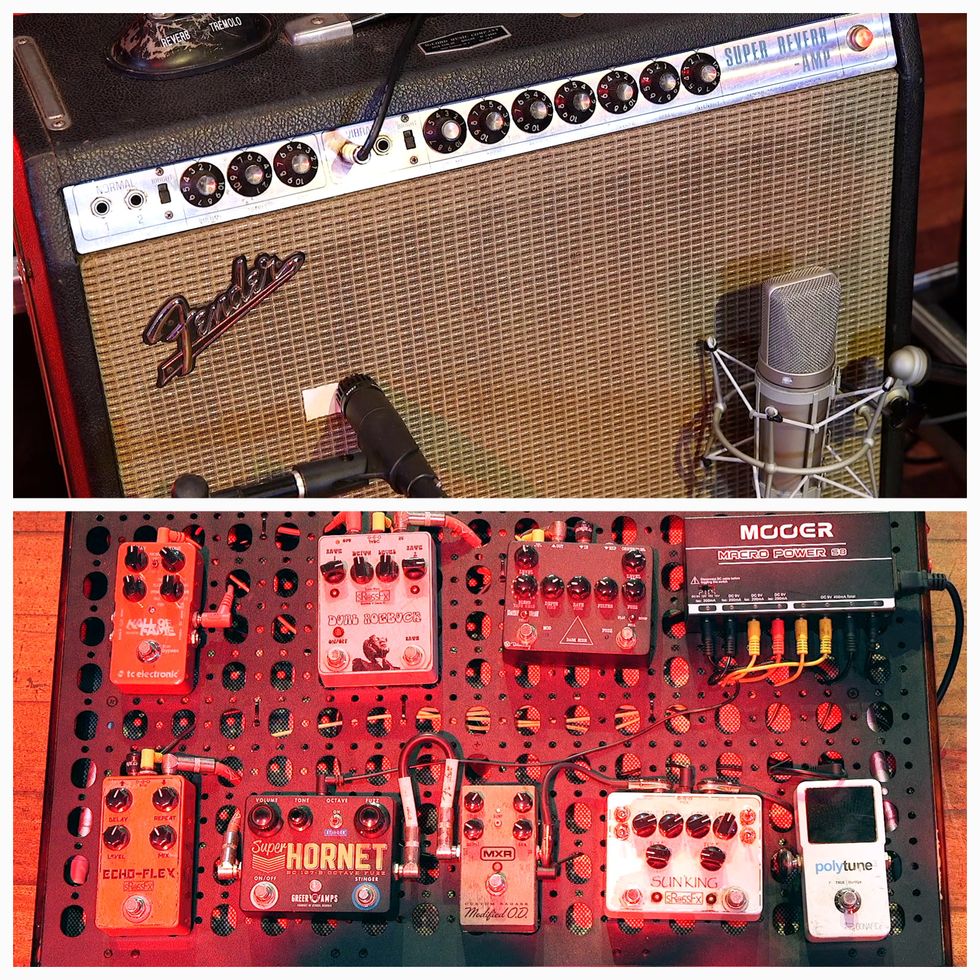I find myself adding “outside” notes to spice up typical progressions or chords I encounter all the time. Just like a chef, you need to know when to use this technique, as too much spice isn’t always nice. I’m not trying to take you on a jazz odyssey or have you overthink your lines. We will simply use the entire musical alphabet to help us get from point A to point B in a different way.
I like to call these style of licks “ear twisters.” When you add a few more colors to a predictable country line it can take your playing to new and interesting places. Remember, taste is important in choosing how far you “go out” since you don’t want to lose sight of your musicality. We are basically using all the options on the table to create tension that will inevitably lead to resolution. The licks I’ve chosen are for static major, minor, and dominant 7 chords. These are designed to be a small part of a big picture, and any note is ok to use as long as we use it wisely. I’ll show you some ways to start thinking along these lines.
Ex. 1 demonstrates the possibilities within the C chromatic scale. I play the root note followed by the next tone in the chromatic scale. That way you can hear the interval. Intervals can be described as the difference between any two notes. The larger the difference in pitch, the greater the interval. There are a variety of ways to think about intervals, but typically they are referred to as being either major, minor, perfect, octave, or tritone. While this is relatively simple to play, it may be the most important example to not only understand, but master. Both the intervals and the sound they make played together (or consecutively) to me connotates a color or emotion.
Major = happy. Minor = sad. Tritone = tension. Octave and perfect = pure.
Next, I dive into a descending line over C with some chromaticism (Ex. 2). Keep in mind we aren’t necessarily using scales as a reference, we are using notes in relation to the chord itself. Everything has a relation to the chord. Reference Ex. 1 if you don’t know the names of the intervals that you may find interesting or just awkward. Your ear may need to take a while to get used to some intervals but in the grand scheme of chromaticism, any note is available.
Here’s an ascending chromatic line over D (Ex. 3). Ending this lick, we do a country bend, so make sure to bend down with the index finger on the 7th fret. You can phrase it like the recording and slow the final bend to add dramatic flair.
Ex. 4 has a definite Tele-twang feel with double-stops in the front of the lick and plenty of hammer-ons and pull-offs at the end. It works great over an A chord and I might use it over a train beat feel. Try to use it next time you’re jamming to “Working Man Blues” by Merle Haggard, or Vince Gill’s “Liza Jane.”
Chromaticism works just as nicely over minor chords, too. Ex. 5 is a bluesy line with chromatic notes functioning as small connecting points. The leading tone, A#, gives it an exotic sound before resolving nicely on a B minor triad.
Open-string country licks are some of my favorites. In Ex. 6, I especially like the “clash” of the open 2nd string followed by the C (minor second interval) and open E with D# (also a minor second interval). The key here to let each note ring out as long as possible.
In Ex. 7 we move to the G7 chord. You are going to find yourself using double-stops into a bend then incorporating open-strings to work your way down the neck for this twang banger.
The final example (Ex. 8) is the most complex. The half-step theme works nicely over an E or E7 chord. The back half of this lick incorporates a Bb major triad (Bb–D–F) into a bend, then resolves on B and D. The ending of the lick implies a dominant 7 chord and I use my middle finger for the bend on the 3rd string.
That’s a lot to take in without a massive amount of theory. If you feel lost but want to understand intervals better and, more specifically, what you liked about the chromatic notes then I would recommend a bit of deeper analysis. Print out the licks and write the interval underneath the fretted notes to gain a better understanding on what was used to make the chromatic connecting points. It’s an excellent way of finding out the “formula” to what you may like. You’ll notice most of these licks use chord tones, notes from a major or minor scale, or intervals that create tension. Chromatic connecting notes all have a relevancy to the chord and can be used anywhere and in any style with the right amount of knowledge.





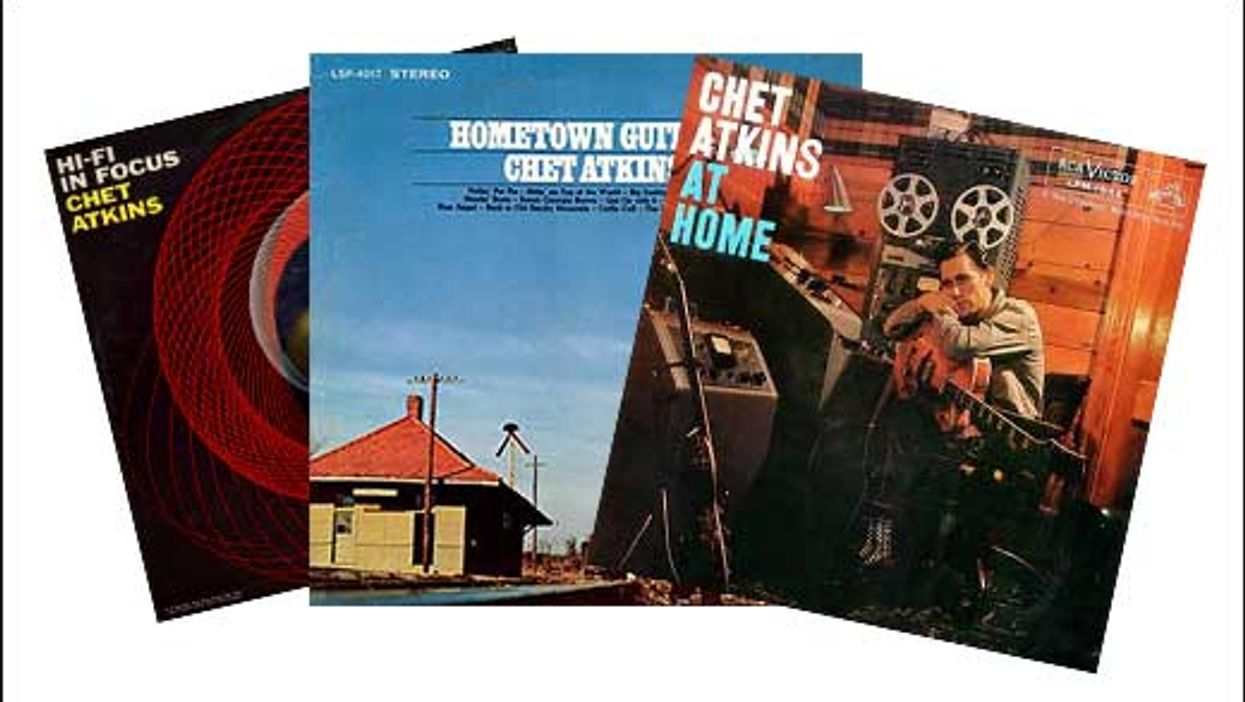


![Devon Eisenbarger [Katy Perry] Rig Rundown](https://www.premierguitar.com/media-library/youtube.jpg?id=61774583&width=1245&height=700&quality=70&coordinates=0%2C0%2C0%2C0)




